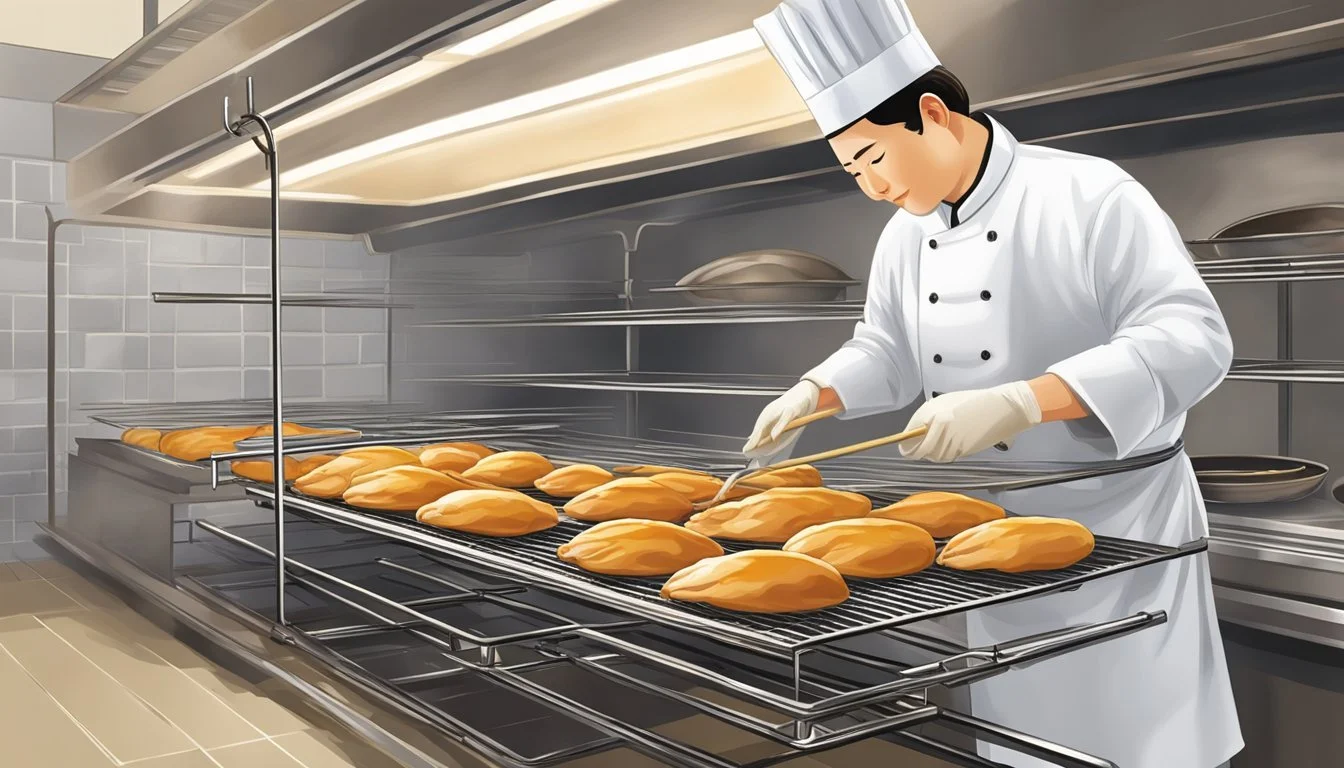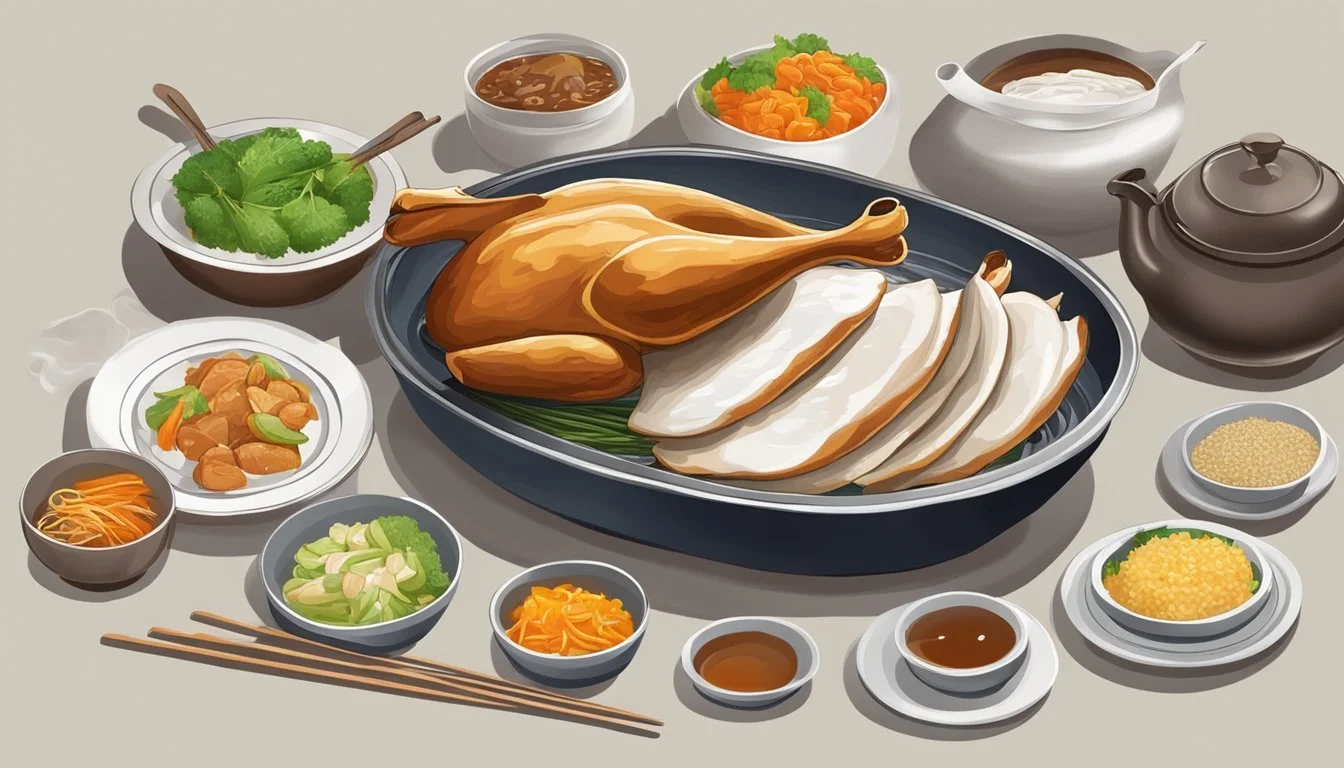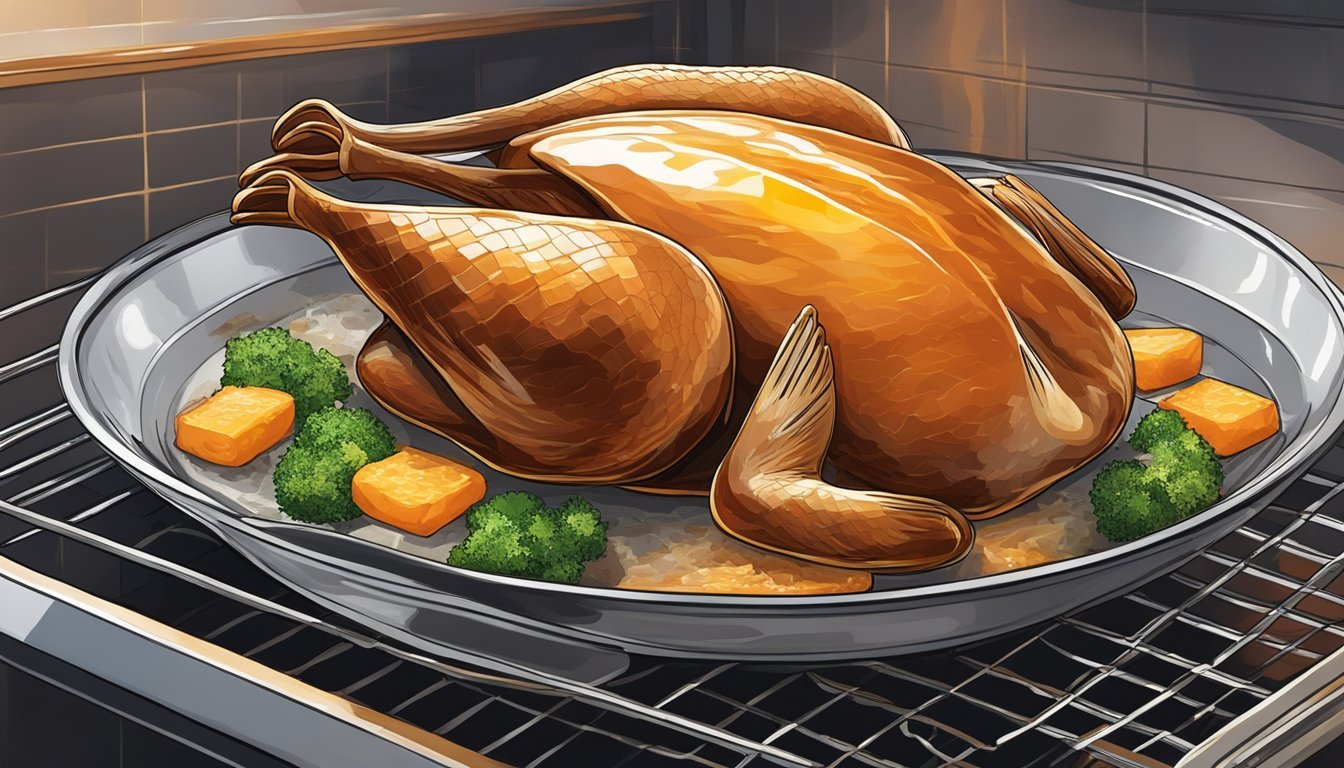Best Way to Reheat a Peking Duck
Ensuring Crispy Skin Every Time
Reheating Peking Duck while preserving its succulent meat and achieving that coveted crispy skin is a culinary challenge that many face after enjoying this classic Chinese cuisine. Peking Duck is renowned for its flavorsome, crispy skin and tender meat, qualities that are often lessened when reheating leftovers. Ensuring that these signature characteristics are retained requires a methodical approach that pays close attention to temperature and cooking time.
The key to successfully reheating Peking Duck lies in a balance between gently warming the meat to avoid drying it out and crisping the skin to restore its delightful texture. Using an oven or a toaster oven can provide the control needed to achieve this balance. Covered to maintain moisture and uncovered for a brief final period to crisp the skin, Peking Duck can be brought back to life with the right technique.
Subtle differences in the reheating process, like whether or not to use a covering such as foil or whether to apply a light layer of oil or melted butter, can influence the final outcome. It's essential to consider these factors and reheating times carefully to ensure that the flavors and textures of this beloved dish are as close to its freshly-cooked state as possible.
Preparation for Reheating
To ensure the Peking duck retains its delectable crispiness, proper preparation is essential. The preparation stage encompasses two key steps: bringing the duck to room temperature and selecting an appropriate container for reheating.
Bringing to Room Temperature
Peking duck leftovers should be removed from the refrigerator and brought to room temperature before reheating. This step typically takes 20-30 minutes. It allows the duck to reheat more evenly and helps the skin crisp up better when heated.
Safety Tip: To prevent bacterial growth, one should not leave the Peking duck at room temperature for more than 2 hours.
Convenience: For ease, leftovers can be placed on a clean countertop on a plate or a rack.
Choosing the Right Container
Selecting an ideal container contributes to the convenience and safety of reheating while preserving the duck's crispiness.
For Oven Use:
An oven-safe dish is preferred. Cover the duck loosely with aluminum foil to prevent drying out.
Tip: One could line the dish with aluminum foil for an easier cleanup.
For Microwave Use:
It's rarely recommended to use a microwave for Peking duck, but if necessary, a microwave-safe dish covered with a microwave-safe lid or a vented plastic wrap should be used to retain moisture.
Safety Reminder: Ensure containers are free from any materials unsuitable for the chosen reheating method.
Storage Advice: Store Peking duck in an airtight container if it is not to be reheated immediately to preserve freshness.
Reheating Techniques
To ensure that reheated Peking duck retains its succulent meat and crispy skin, one must use the right technique. The goal is to achieve a balance where the meat stays tender and juicy, and the skin regains its appealing texture and color without becoming overcooked or rubbery.
Oven Method
Reheating in the oven is one of the most reliable methods. Preheat the oven to 350°F (175°C). The duck should be placed skin-side up on a baking tray lined with foil or on a wire rack to allow even heat circulation. Cover loosely with foil to prevent drying and reheat for about 10-15 minutes. For the final touch, remove the foil and use the broiler for a few minutes for extra crispiness, closely monitoring to avoid burning.
Stovetop Method
For those preferring to use the stove, a cast-iron skillet or heavy pan is ideal. Heat the skillet on medium heat and once hot, place the duck skin-side down without overcrowding. Lightly press for 3-4 minutes until the skin turns golden brown and crispy. Flip the meat briefly to warm the other side, keeping an eye on the texture and color to avoid overcooking.
Air Fryer Method
The air fryer can be a quick and effective way to reheat crispy duck. Preheat the air fryer to approximately 375°F (190°C). Arrange the duck pieces in a single layer inside the basket to ensure even cooking. Heat for around 5-7 minutes, checking halfway through to assess whether it's heating uniformly.
Steamer Method
Steaming is a gentle method that keeps the duck tender and maintains its moisture. Fill a steamer with water and bring to a simmer. Place the duck in the steamer basket, ensuring it’s not in contact with the water. Steam for 8-10 minutes, then quickly transfer to a skillet and sear the skin on high heat for a minute or two to restore its crispiness.
For each method, it's recommended to use a meat thermometer to check the internal temperature, which should read 165°F (74°C) for safe consumption, although the duck is already cooked and only requires reheating to taste.
Avoiding Common Mistakes
When reheating Peking duck, one should be aware of the pitfalls that can compromise the quality of the dish. Overcooking, drying out the meat, or losing the prized crispy skin can turn a delectable meal tough, rubbery, and disappointing.
Avoiding the Microwave
Using a microwave for reheating Peking duck is a common error. While it's quick, this method often leads to rubbery skin and unevenly heated meat. To retain the duck's quality, refrain from using the microwave altogether.
Preventing Drying Out
Asserting moisture is paramount to a succulent reheated duck. One should lightly coat the duck in butter or a honey-based glaze before reheating in the oven to help it remain moist. Further, covering the duck with foil during the heating process can prevent it from drying out.
Retaining Crispiness
Keeping the skin crispy is essential for the enjoyment of Peking duck. Achieving this requires a method that evenly distributes heat without subjecting the skin to moisture. A proven strategy is to place the duck on a wire rack in the oven, which allows air to circulate and keeps the skin from becoming soggy. Optionally, one can also utilize a hot oil method after oven reheating, where the skin is lightly brushed with hot oil to enhance its crispiness.
It's worth noting that dishes that have been refrigerated or kept in the freezer should be thawed properly, and a gentle reheating in an oven is preferable to methods like microwave reheating or using a slow cooker, which aren't conducive to preserving the delicate texture of Peking duck.
Accompaniments and Serving
Peking duck is not just a dish, but a culinary experience that combines the delicate flavors of the meat with a variety of accompaniments that enhance its taste. Properly selected sides and sauces can transform the duck into a feast for both the palate and the eyes.
Complementary Sides
When serving Peking duck, the sides should complement the dish without overpowering its rich flavor. A traditional accompaniment is thin, tender pancakes which act as a vehicle for the duck. To add freshness and a crisp texture, cucumber strips and scallions are typical. In some instances, lightly seasoned potatoes can accompany the duck to offer a heartier component. It's common in Beijing for these sides to be thoughtfully presented at the table, signifying the importance of the dish for special occasions.
Sauces and Seasoning
The sauces and seasonings used with Peking duck are crucial as they contribute to the overall flavor profile of the dish. Hoisin sauce is a popular choice known for its sweet and salty taste, while a simple sweet soy sauce or a sweet bean sauce may be used for a more authentic flavor. Some restaurants provide a sauce mixed with a hint of sherry, which can elevate the taste with a subtle complexity. Additionally, a sprinkling of spices and herbs can be offered on the side for guests to customize the intensity and aroma of each bite.
Storage and Preservation
Preserving Peking duck correctly is crucial for maintaining its quality during storage. Peking duck should be stored in a way that minimizes moisture loss and prevents bacterial growth.
Proper Refrigeration
When refrigerating Peking duck, it should be placed in an airtight container or tightly wrapped in parchment paper and then in plastic wrap to protect it from air exposure. The duck must be stored in the refrigerator at temperatures below 40°F (4°C) to retard bacterial growth. If one plans to reheat the duck within a few days, keeping it refrigerated is the best option.
Do:
Wrap the duck in parchment paper before covering it with plastic wrap.
Store in the coldest part of the refrigerator.
Don't:
Leave the duck exposed to the air.
Store the duck near raw food that could contaminate it.
Freezing and Thawing
To freeze Peking duck, first make sure it cools down completely after cooking. Wrap the duck securely in parchment paper followed by foil to prevent freezer burn. Properly wrapped duck can be stored in the freezer for up to three months. To thaw frozen Peking duck, transfer it to the refrigerator and allow it to defrost slowly, usually overnight. One must never thaw the duck at room temperature as it can encourage bacterial growth.
Freezing Steps:
Cool the Peking duck thoroughly.
Wrap in parchment paper and then in foil.
Place in the freezer away from foods with strong odors.
Thawing Steps:
Move the frozen Peking duck to the refrigerator.
Allow it to thaw overnight.
Ensure it's completely thawed before reheating.
Final Tips and Tricks
When one aims to reheat Peking duck, the priority is to preserve the skin's crispiness while ensuring the meat remains succulent. Here are some additional tips that can guide the process:
Preheat Wisely: Whether using a conventional oven or a toaster oven, preheating is crucial. Set the temperature to 350°F (180°C) to prepare the cooking environment.
Appropriate Tools: A baking sheet comes in handy to provide an even heat distribution. For grilling aficionados, one might choose to briefly grill the duck to enhance crispiness, but always monitor to avoid charring.
Moisture is Key: Lightly brushing the duck skin with either melted butter or olive oil can lock in moisture, preventing the skin from becoming tough.
Covering the Duck: Initially covering the duck with foil while in the oven retains moisture. Remove the foil towards the end of reheating to crisp the skin.
Avoid Multiple Reheats: It's generally not recommended to reheat Peking duck multiple times as it can degrade its quality and taste.
Execution Time: Typically, reheating takes about 10-15 minutes, followed by an additional 5-10 minutes uncovered for the skin to regain its crisp texture.
Expert Consultation: It never hurts to seek advice from cooking experts or refer to credible culinary resources on platforms like Google to explore various reheating methods.
Remember, while these tips can enhance the outcome, personal adjustments may be necessary based on individual oven or grill characteristics.




